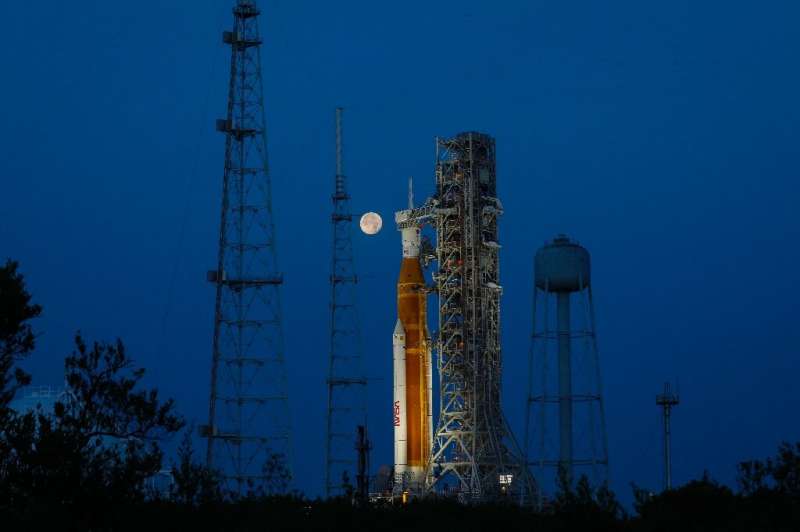NASA Moon rocket test met 90% of objectives

NASA's fourth attempt to complete a critical test of its Moon rocket achieved around 90 percent of its goals, but there's still no firm date for the behemoth's first flight, officials said Tuesday.
Known as the "wet dress rehearsal" because it involves loading liquid propellant, it is the final item to cross off the checklist before the Artemis-1 mission slated for this summer: an uncrewed lunar flight that will eventually be followed by Moon boots on the ground, likely no sooner than 2026.
Teams at the Kennedy Space Center began their latest effort to complete the exercise on Saturday.
Their objectives were to load propellant into the rocket's tanks, conduct a launch countdown and simulate contingency scenarios, then drain the tanks.
Three previous bids, starting in March, were plagued by glitches and failed to fuel up the rocket with hundreds of thousands of gallons of supercooled liquid hydrogen and liquid oxygen.
On Monday, engineers finally succeeded in fully loading up the tanks. But they also encountered a new hydrogen leak issue they were unable to resolve.
"I would say we're in the 90th percentile in terms of where we need to be overall," Artemis mission manager Mike Sarafin told reporters Tuesday.
He added NASA was still deciding whether it needed another rehearsal, or could proceed straight to launch. The agency previously said an August window for Artemis-1 was possible.
NASA officials have repeatedly emphasized that delays involving the testing of new systems was common during the Apollo and Space Shuttle era, and the issues affecting SLS are not of major concern.
With the Orion crew capsule fixed on top, the Space Launch System (SLS) Block 1 stands 322 feet (98 meters) high—taller than the Statue of Liberty, but a little smaller than the 363 feet Saturn V rockets that powered the Apollo missions to the Moon.
It will produce 8.8 million pounds of maximum thrust (39.1 Meganewtons), 15 percent more than the Saturn V, meaning it's expected to be the world's most powerful rocket at the time it begins operating.
Artemis-1 is set to journey around the far side of the Moon sometime this summer on a test flight.
Artemis-2 will be the first crewed test, flying around the Moon but not landing, while Artemis-3 will see the first woman and first person of color touch down on the lunar south pole.
NASA wants to build a permanent presence on the Moon, and use it as a proving ground for technologies necessary for a Mars mission, sometime in the 2030s.
© 2022 AFP





















